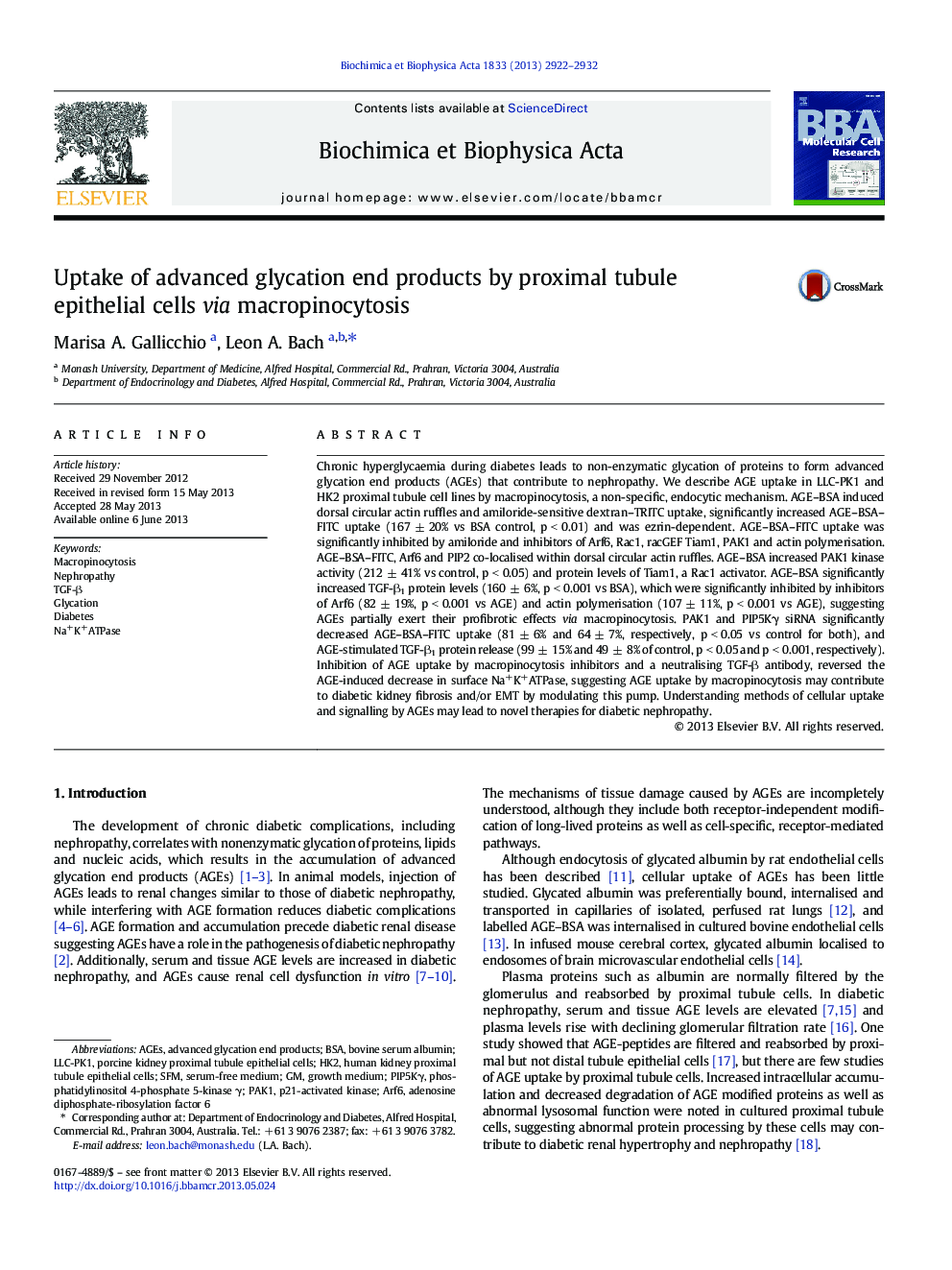| Article ID | Journal | Published Year | Pages | File Type |
|---|---|---|---|---|
| 8303891 | Biochimica et Biophysica Acta (BBA) - Molecular Cell Research | 2013 | 11 Pages |
Abstract
Chronic hyperglycaemia during diabetes leads to non-enzymatic glycation of proteins to form advanced glycation end products (AGEs) that contribute to nephropathy. We describe AGE uptake in LLC-PK1 and HK2 proximal tubule cell lines by macropinocytosis, a non-specific, endocytic mechanism. AGE-BSA induced dorsal circular actin ruffles and amiloride-sensitive dextran-TRITC uptake, significantly increased AGE-BSA-FITC uptake (167 ± 20% vs BSA control, p < 0.01) and was ezrin-dependent. AGE-BSA-FITC uptake was significantly inhibited by amiloride and inhibitors of Arf6, Rac1, racGEF Tiam1, PAK1 and actin polymerisation. AGE-BSA-FITC, Arf6 and PIP2 co-localised within dorsal circular actin ruffles. AGE-BSA increased PAK1 kinase activity (212 ± 41% vs control, p < 0.05) and protein levels of Tiam1, a Rac1 activator. AGE-BSA significantly increased TGF-β1 protein levels (160 ± 6%, p < 0.001 vs BSA), which were significantly inhibited by inhibitors of Arf6 (82 ± 19%, p < 0.001 vs AGE) and actin polymerisation (107 ± 11%, p < 0.001 vs AGE), suggesting AGEs partially exert their profibrotic effects via macropinocytosis. PAK1 and PIP5Kγ siRNA significantly decreased AGE-BSA-FITC uptake (81 ± 6% and 64 ± 7%, respectively, p < 0.05 vs control for both), and AGE-stimulated TGF-β1 protein release (99 ± 15% and 49 ± 8% of control, p < 0.05 and p < 0.001, respectively). Inhibition of AGE uptake by macropinocytosis inhibitors and a neutralising TGF-β antibody, reversed the AGE-induced decrease in surface Na+K+ATPase, suggesting AGE uptake by macropinocytosis may contribute to diabetic kidney fibrosis and/or EMT by modulating this pump. Understanding methods of cellular uptake and signalling by AGEs may lead to novel therapies for diabetic nephropathy.
Keywords
Related Topics
Life Sciences
Biochemistry, Genetics and Molecular Biology
Biochemistry
Authors
Marisa A. Gallicchio, Leon A. Bach,
